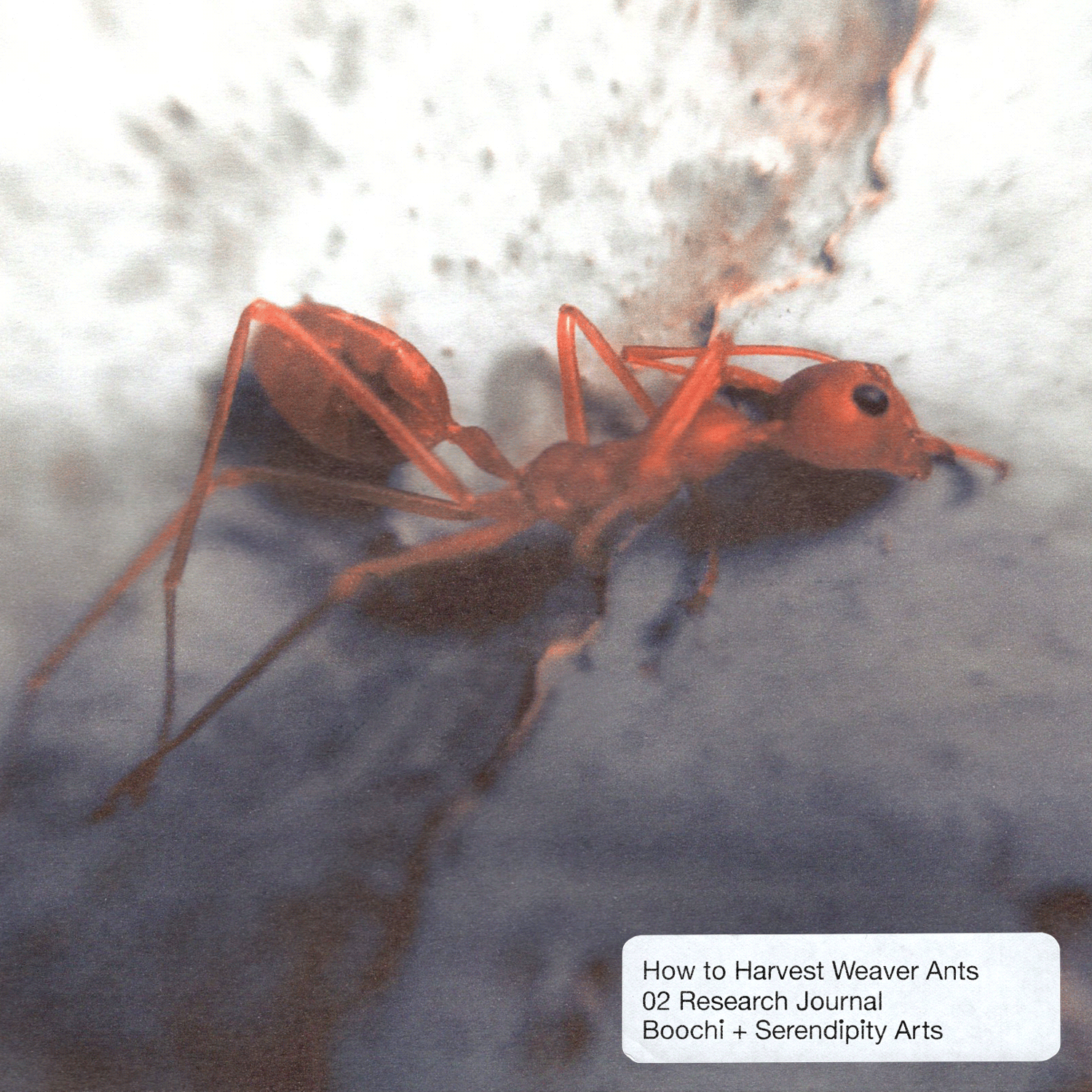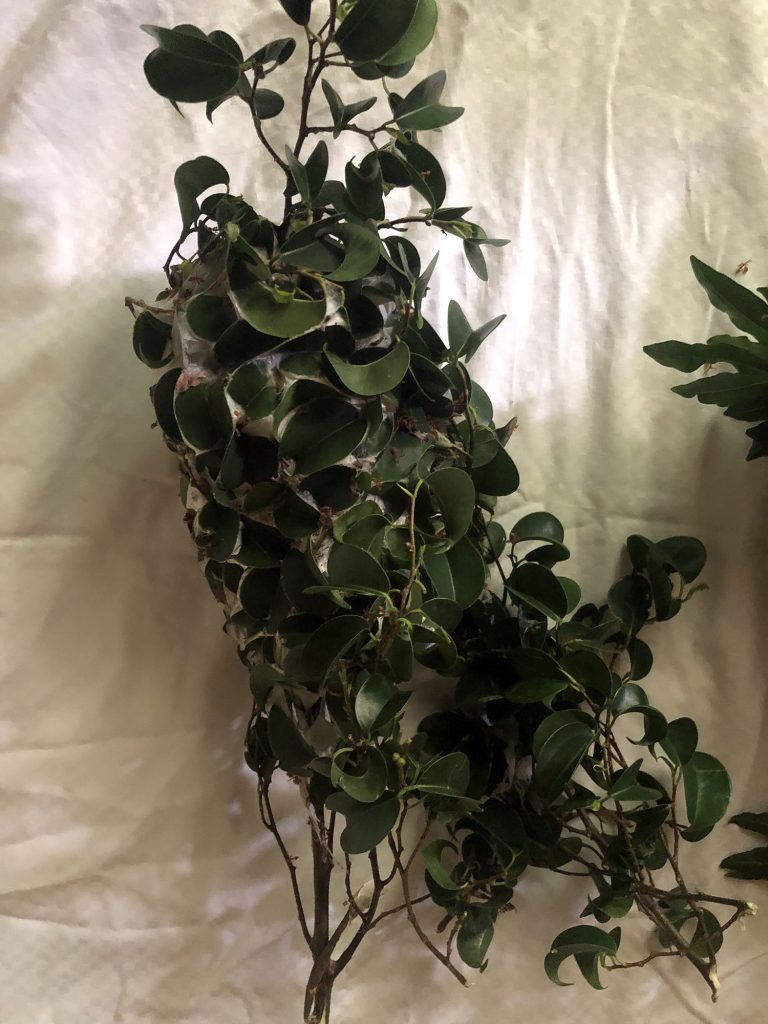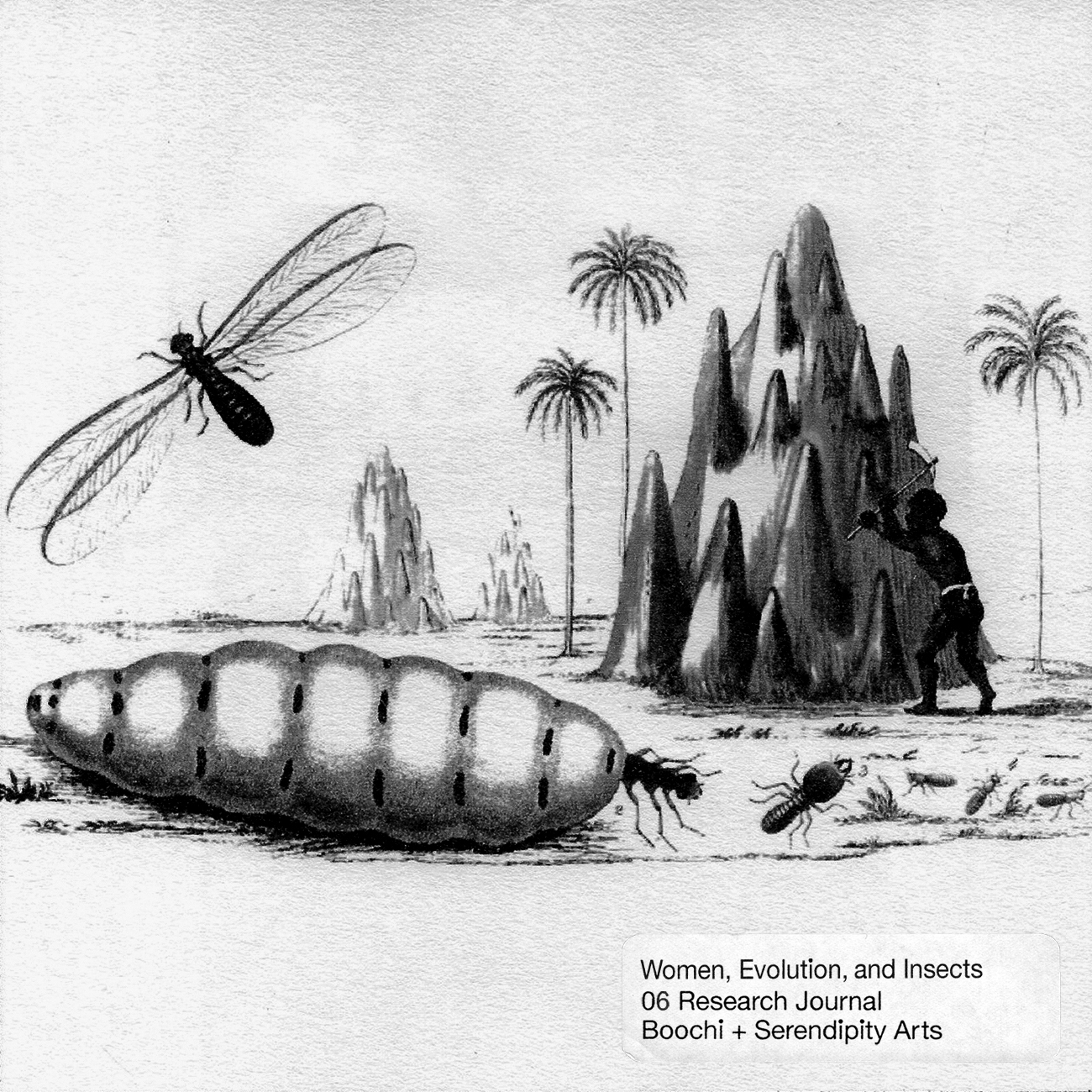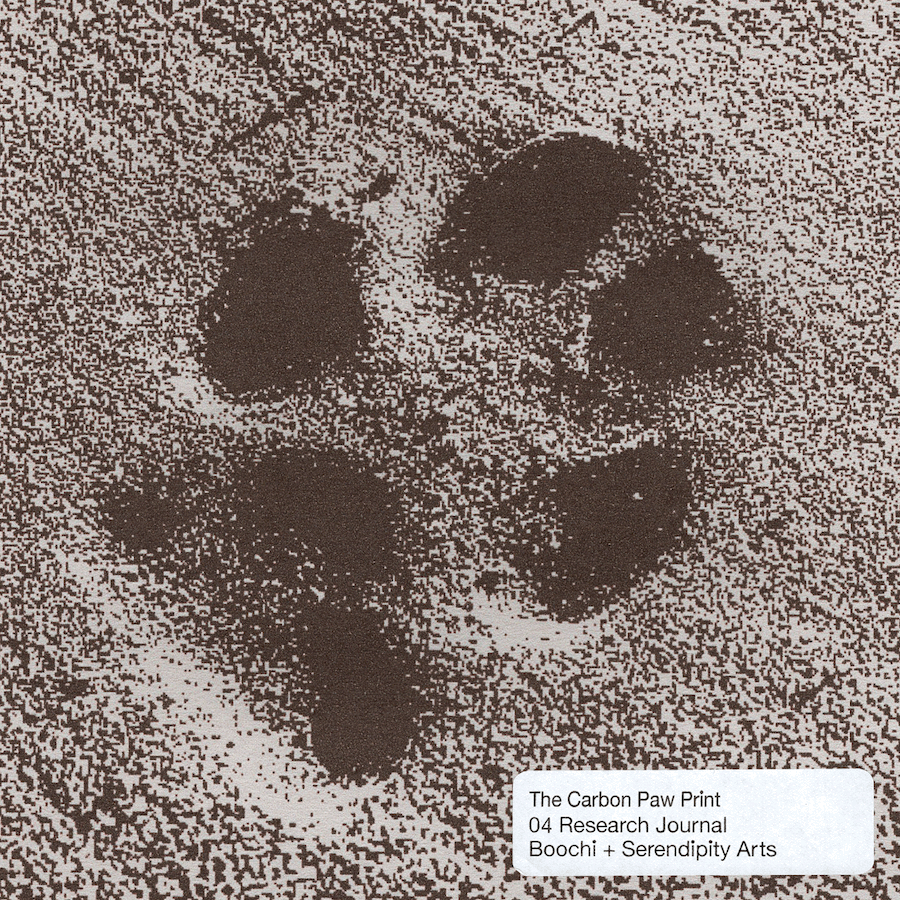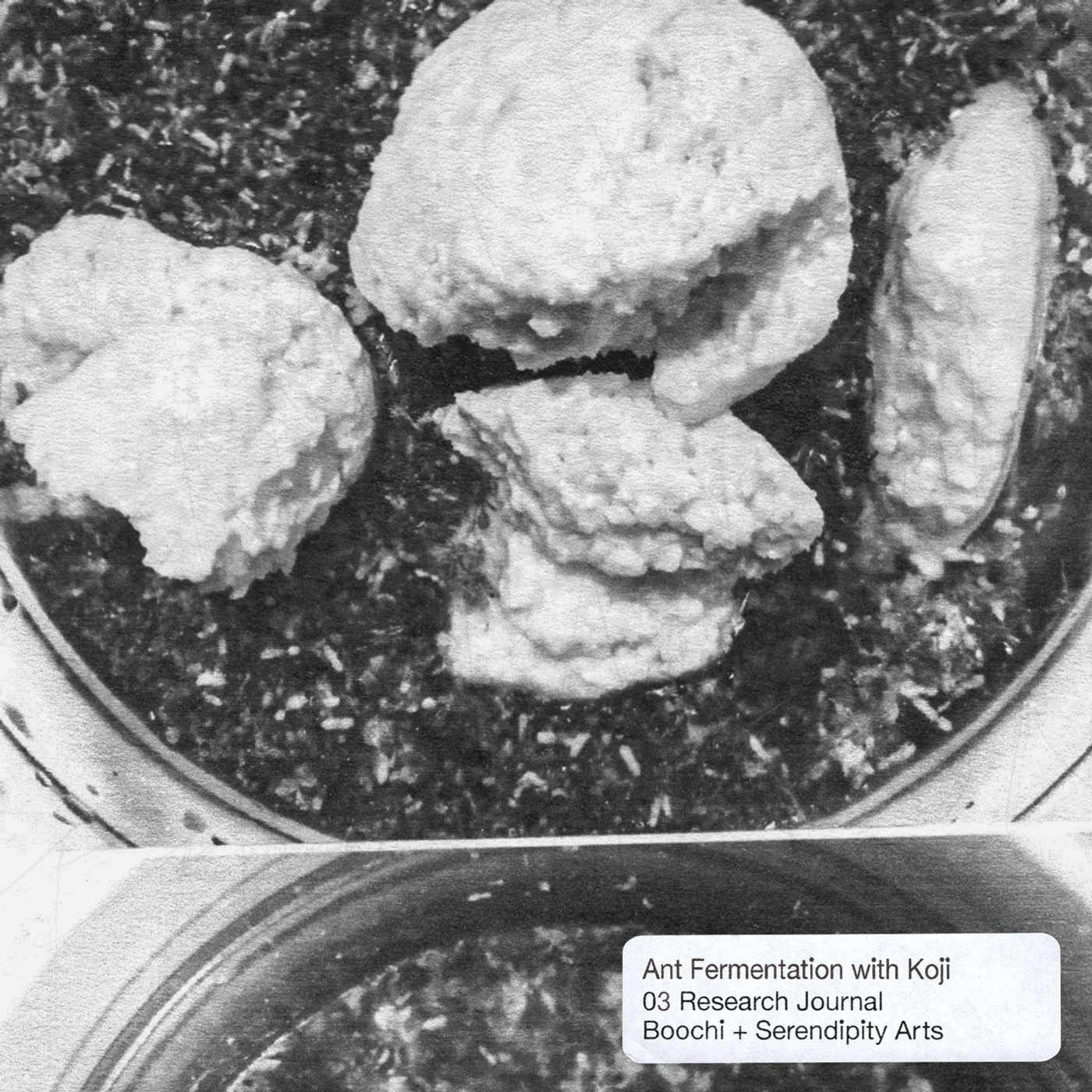The first time I harvested a weaver ant nest I had ants in my pants. Literally. Let me assure you, that is not where you want them. Ever. Having now understood the urgency that the idiom expresses in a most visceral manner, I’ve compiled my field notes to break it down for you (presuming “you” are a fellow city dweller with no idea of how the heck one would collect biting ants to eat them), should you ever find yourself in need of this information.
What you’ll need to harvest a weaver ant nest:
- Someone other than yourself to be present, who will hopefully have more courage than you
- Large bags to fit the nest (I reused garbage bags)
- Full body armor. In its absence, please cover as much of your skin as possible—tuck pants into socks so the ants don’t enter through that gap, get trapped in your clothes and keep panic-biting you.
- A pair of pruning shears or secateurs
- Closed shoes
- The Force to be with you
- A Freezer
Step 1: Find a Nest (on a tree that you can climb*)
Weaver ants are arboreal, which means they live in trees and much of your time will be spent gazing into the canopy looking for signs of leaves curled into clusters. I have successfully found nests in trees in my garden (especially during the monsoon), in a community park and a food forest. To confirm that it is a weaver ant nest, look for the wispy white silk like material “weaving” the leaves together. You will also probably spot a few of them scuttling in and out. Hope for a nest that is not too high up on the tree; the height of the nest is directly proportional to difficulty.
Once the nest has been located, assess that its size is big enough to be worth the inevitable pain coming your way. If not, keep looking for the right one. You want one that’s at least larger than your handspan, preferably two.
* both up and down. This is important. Getting stuck up in a tree is fun, until you need to pee.
Step 2: Assign Roles
If the nest is above your reach from the ground, someone’s going to have to climb up and cut the nest. The other person will have the task of standing below with the bag open, ready to collect it.
If you find yourself alone, I recommend you turn around and find yourself some company. If you have no friends, and still choose to persevere on your own, look for nests closer to the ground so you don’t waste time getting down from the tree once you’ve cut down the nest. The ants disperse very quickly, so you’ll want to be quick to get it in the bag.
Step 3: Clear Your Path
Once you’re close to the nest, either from the ground or on a tree, use the secateurs and cut away any small branches that obstruct your direct path to the nest. You’re doing this to minimise bites. The ants know when you’re coming—they feel every little move. It takes skill and dexterity well beyond the ability of this writer to catch them with the element of surprise.
Step 4: CUT, DROP AND TIE
By now one of two things has happened. Either you have very carefully cleared your path and are now in a great position to cut the nest. In which case, with your partner holding the bag open directly below it, simply cut the branch closest to the nest and drop it into the bag. Now, at the speed of light, twist and tie the bag so that the nest is secured and you are in the clear.
If your attempt at careful clearance has failed and the ants are onto you:
- Hold your breath
- Fight back your tears from the bites
- Cut anywhere you can and drop the damn nest
Now. They’re angry. And they’re everywhere. The person on the ground must act swiftly, and in as little as one move, get the nest into the OPENED bag. If you’re alone, like I have been on a number of occasions, my best wishes go out to you.
Improvisation is key here. There’s no telling what may happen. You will be bitten.
It will hurt (but not for long). Just let the adrenaline take over, and try to remember that this will all be worth it.
Once you have managed to stuff the nest into the bag and secured it with a couple of knots, and then one more for good measure, give yourself a moment. Well done!
Step 5: Freeze
Next, you’ll want to freeze the whole nest for about 8-10 hours. Some people dunk the nests in water, but freezing best preserves the formic acid, which lends the ants their characteristic sourness.
Step 6: Open it up
Once all movement has noticeably stopped, open up the nest and collect the ants into a box. The red ants are the adults, and the white ovals are the ant eggs. Keep an eye out for other things that might get mixed up—I’ve found and removed leaves, pebbles and feathers a number of times. The ants can be stored in your freezer for months.
Something to Consider:
I last harvested ants on the 17th of September, and collected 797 grams from two nests. While I was dancing the ants off of my body and putting the nest into the bag at the same time, a man named Lakshman stopped by and was polite enough to tell me I was doing it all wrong.
“In my village, the nests are always taken just after sunrise. It’s cold in the morning, so the ants are slower to react and you get bitten less. When the sun is out, they’re out and you will get bitten badly,” he explained.
Will try this, and report back on the matter.
Boochi and its learnings have been initiated at and facilitated by the Serendipity Arts Residency Food Lab.
